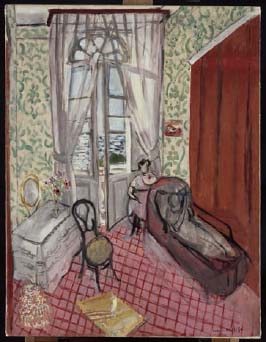From the Industrial Revolution to World War I, C. 1850–1914Early Twentieth-Century Art |
What is Expressionism? |
The term “expressionism” is commonly used in the arts, but with a capital “E,” it refers to an art movement that developed in Germany at the start of the twentieth century. German Expressionism, like Fauvism, was concerned with communicating powerful feelings through color and visual style and Expressionist works often incorporate meaningful symbols. There were two important groups of painters who were part of the Expressionist movement in Germany. The first was called Die Brücke (The Bridge) and the second was known as Der Blaue Reiter (The Blue Riders).

Henri Matisse was one of the most innovative and influential artists of the nineteenth and twentieth centuries. His Femme au Canapé, also known as Le Divan (1921), is filled with bright, flat colors. Matisse emphasizes the importance of the light-filled window, which dominates the scene. (Artwork: © 2013 Succession H. Matisse / Artists Rights Society [ARSI, New York. Photo: RMN-Grand Palais / Art Resource, NY)
